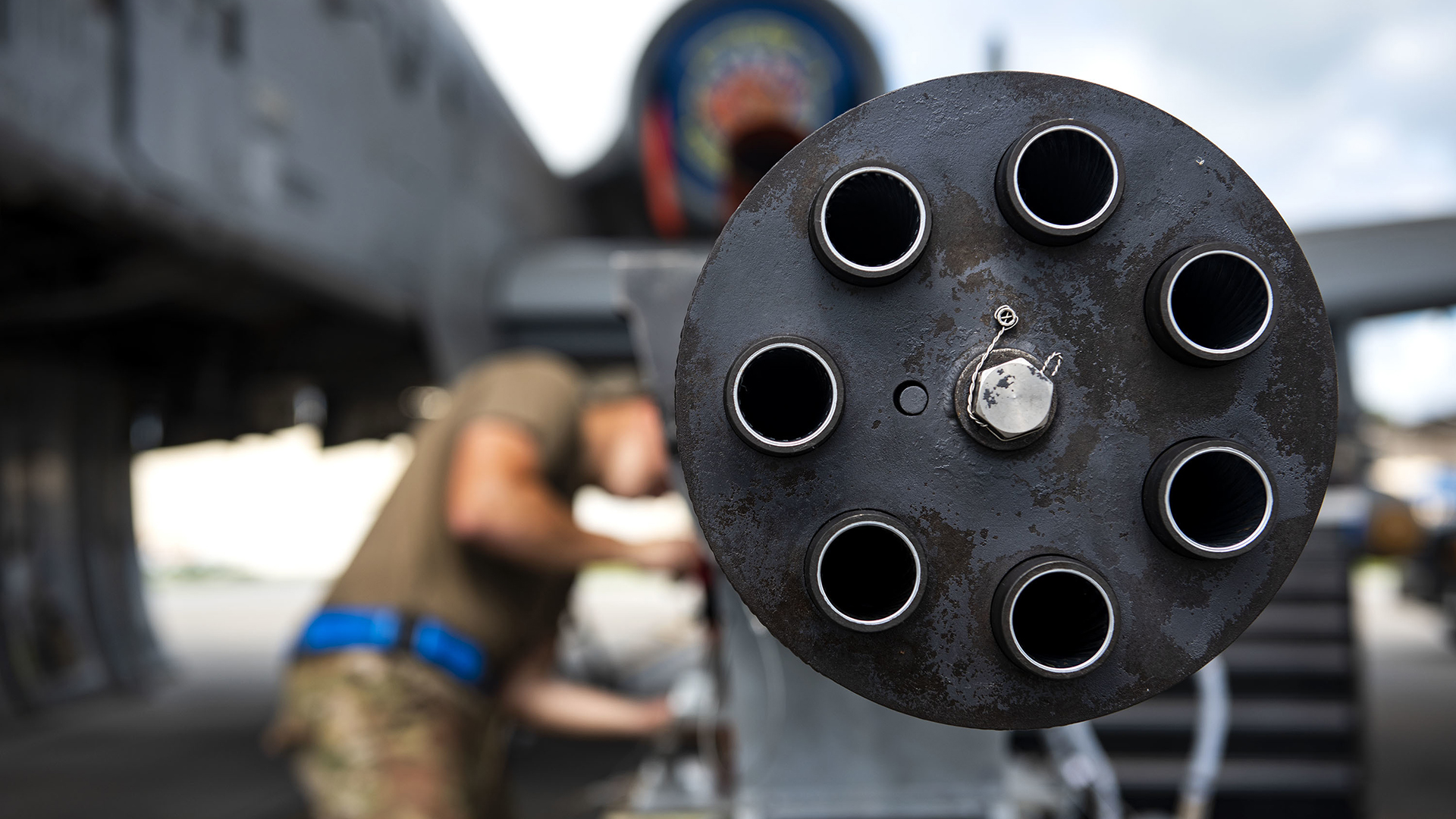

Russia’s invasion of Ukraine has shown that anti-aircraft guns are still relevant to air defense in an age when relatively inexpensive drones can pose a growing threat to troops and civilians.
As part of its latest military assistance package to Ukraine, the United States is providing the Ukrainians with nine 30mm “gun trucks” to destroy Iranian-made drones, such as the Shahed-131 and Shahed-136 kamikaze drones, a senior defense official said.
Little information is publicly available about what the gun trucks, a new weapons system, would look like.
“It’s literally what it sounds like, a 30-millimeter gun mounted on a truck,” the senior defense official told reporters on Tuesday. “Because that’s procurement, it’s going to take several months to be able to actually provide that to Ukraine.”
Subscribe to Task & Purpose Today. Get the latest military news, entertainment, and gear in your inbox daily.
Decades ago, the U.S. Army had an air defense system that may be similar to the new gun trucks. The M167 Towed Vulcan Air Defense System, or VADS, featured a six-barrel 20mm cannon that fired in bursts. It was crewed by a single operator, who was seated behind the gun and sights with a range-only radar to the operator’s right.

The VADS has since been replaced by other air defense systems such as the Avenger, which consists of Stinger missiles that are normally mounted on a Humvee. U.S. soldiers no longer train on how to use the VADS at the Fires Center of Excellence, said Maj. Andrew Harshbarger, a spokesman for U.S. Army Training and Doctrine Command.
Lt. Gen. Serhii Nayev, a top Ukrainian military commander, recently explained why anti-aircraft guns are so important in the fight against Iranian-made drones, which Russia has launched against Ukrainian cities and its critical infrastructure, such as power stations.
“’Shaheds’ are low-speed targets, and for their destruction, it is necessary to use large-caliber machine guns, which are more effective,” Nayev said, according to Ukrainian media.
The 30mm gun trucks will provide Ukraine with an inexpensive solution to the threat posed by Shahed drones, said Samuel Bendett, an adviser with CNA, a non-profit research and analysis organization in Arlington, Virginia.
“Essentially, the CUAS [counter-unmanned aerial systems] costs have to be driven down to the most cost-effective and workable solution — which the Ukrainians note is a mobile gun truck capable of taking out Shaheds,” Bendett told Task & Purpose. “Some of these also come with a searchlight to monitor Shaheds during the night on approach to possible Ukrainian targets.”
Czech volunteers have already donated 15 mobile MR-2 Viktor anti-drone systems to Ukraine, which use a pair of 14.5mm guns to shoot drones down, Bendett said. The system has been mounted in the bed of a pickup truck.
It’s possible the 30mm gun systems provided by the United States could fit in a Toyota Hilux or a slightly bigger pickup truck, said Bendett, who noted that a picture emerged from Yemen last year showing a giant Vulcan gun mounted in the back of a Toyota truck.

One reason why anti-aircraft guns have proven to be so effective against Iranian-made drones is that Ukrainians have discovered Shahed’s fly a lot like aircraft during World War II, such as the German Stuka dive bomber, said Benjamin Jensen, an expert on future war, gaming, and strategy at the Center for Strategic and International Studies.
“Radar-guided and light-assisted anti-aircraft fire is the best way to attack them in their terminal trajectory,” Jensen told Task & Purpose. “So, basically put up a wall of lead to stop it, very similar to how anti-aircraft crews used to work in World War II.”
That’s why the Ukrainians have been welding DShK machine guns combined with searchlights and radar systems in the back of pickup trucks to shoot down the Iranian-made drones, Jensen said. The 30mm gun trucks being provided by the United States are an improved version of Ukraine’s battlefield solution to the Shahed threat.
Admittedly, the Ukrainians are just getting nine of the gun trucks for now.
“That’s a pin drop, but it’s a start,” Jensen said. “The good news is this type of battlefield adaption is easier to scale up than, say, tanks or aircraft – because it’s really finding the truck, getting the weapons system bolted, and then integrating it with searchlights and air-search radars.”
Moreover, the U.S. military might find that it too needs gun trucks to counter drones, especially considering how little they cost when compared with the Army’s short-range air defense, or SHORAD, Jensen said.
“Is there a chance that we would have to fight Iran? Sadly, yes,” Jensen said. “They’ve attacked our troops multiple times in Iraq and Syria. So, it gives us a chance to help the Ukrainians but also learn how to counter swarming drones.”
The latest on Task & Purpose
- Mike Day, Navy SEAL who survived being shot 27 times in Iraq, dies
- Army pulls ‘Be All You Can Be’ commercials after Jonathan Majors’ arrest
- Marine infantry veteran with Nashville police helped take down active shooter
- Army identifies 9 soldiers killed in dual Black Hawk crashes
How a team of scientists are exploring the remnants of a World War II battlefield at Guam
